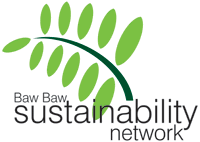By David Arnault
On this anzac day
with all else forgotten
but the events of all those years ago
when Australia and Canada
India and New Zealand
followed blindly the British establishment
into the fury of carnage
against nations and peoples
we had no quarrel with,
it is worthwhile to remember
that it is possible for nations
to cooperate
and to create great things.
Many are the pejoratives
associated with the world’s
developing, developed,
underdeveloped nations,
but sometimes we have to sit up
and take notice of people from elsewhere
seeing more clearly than
the god-blessed of our world.
While we in Australia
and the rest of the smug
English-speaking world,
we are erasing ecosystems
as if they were a line of ants
marching across the kitchen bench
climbing up into the cupboards,
and threatening our next meal,
disrupting our lives
serving a godless purpose
hidden from us.
As I tip-tap type on this keyboard,
a great movement is taking place,
and it is African,
and it not only exhibits human behaviour
unlikely to be seen here
in the near future,
people cooperating,
working with neighbours,
working with those
in neighbouring countries,
building a future
which does not involve destruction.
Rather it is a grand effort
and it is an example that human beings
can work cooperatively,
can work across political frontiers.
In English, it’s called
the Great Green Wall of Africa.
It was first mooted in 2002,
as a way to halt the advance of the Sahara.
The southern section,
eight thousand miles across
the widest part of Africa,
and 50 kilometres in depth,
the wall will run from the Atlantic
to the Red Sea.
The northern section like the southern,
represents a ‘mosaic of interventions’
and a boost to rural development.’
But the Great Green Wall has become more
The $8-billion project plans to restore
100 million hectares of land
create 350,000 rural jobs
and absorb 250 million tons
of carbon dioxide
from the atmosphere.
And where there are trees,
the chance of rain will be enhanced,
so perhaps it becomes self-sustaining.
Local planning including choices of trees
rest with local populations,
a concept well worth trying
in other parts of the world.
We have seen over and over again
how we treat our ecosystems,
and these days the Murray Darling basin
springs to mind.
But this list is long,
the contempt
of government and industry
breathtaking,
Cynics among us will argue
that once the trees are mature,
VicForests, or some equivalent agency,
will cut them down and sell them
to a paper mill in Japan,
to publish a major paper
on sustainability.
I, for one, am not cynical.
Let us learn from our African
brothers and sisters
and save our ecosystems.
yours in solidarity and love
david arnault


Comments